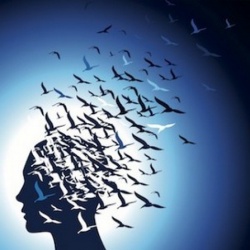Difference between revisions of "Deaths"
(Created page with "thumb|250px| Death is the cessation of all biological functions that sustain a particular living organism. Phenomena which commonly bring a...") |
|||
| Line 1: | Line 1: | ||
[[File:Fre d-mind.jpg|thumb|250px|]] | [[File:Fre d-mind.jpg|thumb|250px|]] | ||
| − | |||
| − | |||
| − | + | [[Death]] is the [[cessation]] of all {{Wiki|biological}} functions that sustain a particular living {{Wiki|organism}}. | |
| − | The most common cause of human [[deaths]] in the [[world]] is heart disease, followed by stroke and other cerebrovascular diseases, and in the third place lower respiratory infections. | + | [[Phenomena]] which commonly bring about [[death]] include {{Wiki|biological}} [[aging]] ([[senescence]]), predation, malnutrition, {{Wiki|disease}}, [[suicide]], murder and accidents or [[trauma]] resulting in terminal injury. |
| + | |||
| + | [[Bodies]] of living {{Wiki|organisms}} begin to decompose shortly after [[death]]. | ||
| + | |||
| + | There is no [[scientific]] {{Wiki|evidence}} that [[consciousness]] survives the [[death]] of an {{Wiki|organism}} | ||
| + | |||
| + | In [[human]] {{Wiki|societies}}, the [[nature]] of [[death]] and humanity's [[awareness]] of their [[own]] {{Wiki|mortality}} has for millennia been a [[concern]] of the [[world]]'s [[religious]] [[traditions]] and of [[philosophical]] inquiry. | ||
| + | |||
| + | This includes [[belief]] in {{Wiki|resurrection}} (associated with {{Wiki|Abrahamic}} [[religions]]), [[reincarnation]] or [[rebirth]] (associated with [[Dharmic]] [[religions]]), or that [[consciousness]] permanently ceases to [[exist]], known as oblivion. | ||
| + | |||
| + | Commemoration {{Wiki|ceremonies}} after [[death]] may include various [[mourning]] or [[funeral]] practices. | ||
| + | |||
| + | The [[physical]] remains of a [[person]], commonly known as a corpse or [[body]], are usually interred whole or [[Wikipedia:cremation|cremated]], though among the world's cultures there are a variety of other methods of mortuary disposal. | ||
| + | |||
| + | In the English [[language]], [[blessings]] directed towards a [[dead]] [[person]] include rest in [[peace]], or its initialism RIP. | ||
| + | |||
| + | The most common [[cause]] of [[human]] [[deaths]] in the [[world]] is [[heart]] {{Wiki|disease}}, followed by stroke and other cerebrovascular {{Wiki|diseases}}, and in the third place lower respiratory infections. | ||
{{W}} | {{W}} | ||
[[Category:Buddhist Terms]] | [[Category:Buddhist Terms]] | ||
Revision as of 06:59, 26 February 2016
Death is the cessation of all biological functions that sustain a particular living organism.
Phenomena which commonly bring about death include biological aging (senescence), predation, malnutrition, disease, suicide, murder and accidents or trauma resulting in terminal injury.
Bodies of living organisms begin to decompose shortly after death.
There is no scientific evidence that consciousness survives the death of an organism
In human societies, the nature of death and humanity's awareness of their own mortality has for millennia been a concern of the world's religious traditions and of philosophical inquiry.
This includes belief in resurrection (associated with Abrahamic religions), reincarnation or rebirth (associated with Dharmic religions), or that consciousness permanently ceases to exist, known as oblivion.
Commemoration ceremonies after death may include various mourning or funeral practices.
The physical remains of a person, commonly known as a corpse or body, are usually interred whole or cremated, though among the world's cultures there are a variety of other methods of mortuary disposal.
In the English language, blessings directed towards a dead person include rest in peace, or its initialism RIP.
The most common cause of human deaths in the world is heart disease, followed by stroke and other cerebrovascular diseases, and in the third place lower respiratory infections.
